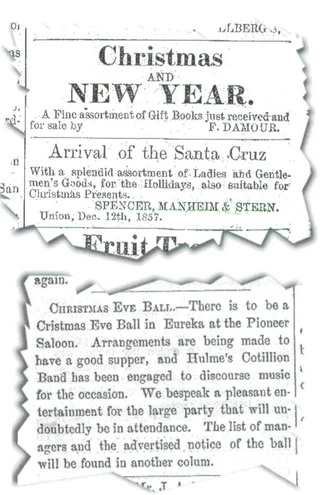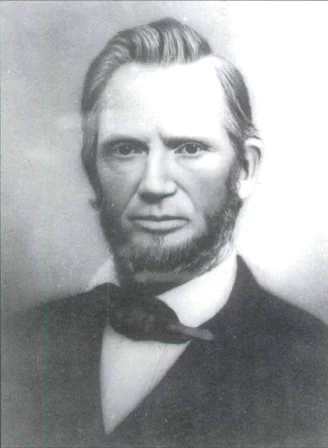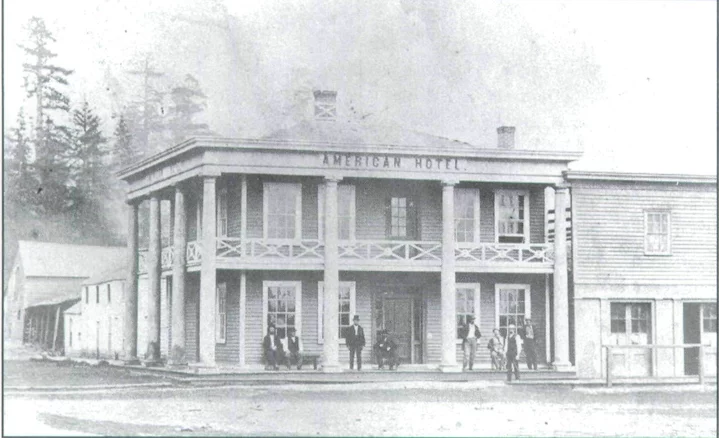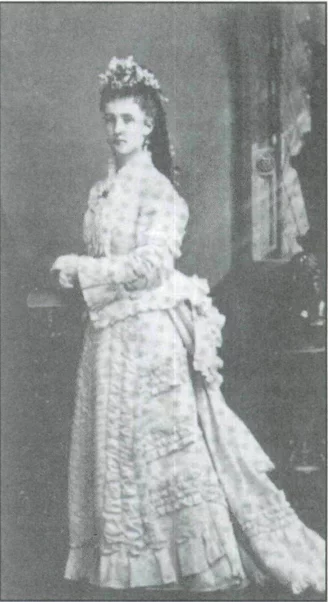The origin of Christmas is really a long story in itself. I don’t mean the event it is supposed to commemorate, I mean the journey from the event to the holiday in December as we know it. But in the Humboldt area early on, none of that was known and the day ! no such significance to anyone. It was only with the coming of the white settlers — with their traditions — that Christmas was noted on the local calendar. The first year that naming occurred was in 1849, or so we are told by L.K. Wood.
Wood was part of the Josiah Gregg party, a group of more determined than prudent explorers who sought a quicker way to supply the miners inland. Wood told his story in a narrative to the Humboldt Times almost six years after he made it back to Sonoma. The group leader, Gregg, had died before he and his extensive notes could make it back to the Sacramento Valley and white assistance. He and presumably his notes were left somewhere ‘ in Lake County, so we only have Wood’s story of Christmas 1849. The men in the Gregg party had taken much longer than they anticipated to reach the ocean from the inland mining area. Rather than the eight days they expected, it took around five to six weeks. When they reached the ocean, they went north and then worked their way south along the beaches until they reached the opening to Humboldt Bay. It couldn’t be crossed, so they headed north again, this time keeping their route to the Bay side of the peninsula to map the shape and size of it.
They ended on a plateau above the marshy area north of Humboldt Bay, close to what is today the location of the Arcata Plaza. Tired, hungry and with dark coming, some set up camp while others went to hunt food. Elk were sighted and shots were fired, but the men came back to camp empty-handed for their Christmas Eve dinner. On Christmas Day, with the morning light, a dead elk was found in the brush. Wood said they roasted the head in the ashes for their Christmas feast. They were so hungry that the simple fare was enjoyed, Wood wrote.
It was not, however, the Christmas he had been used to enjoying back home in Kentucky. A year later, the Humboldt Bay area had established the towns of Trinidad, Union, Eureka, Bucksport and Humboldt City. Streets were surveyed and some structures erected. The giant trees posed a problem. They could be cut down, but not milled with the equipment available, so lumber had to be imported from San Francisco. Housing was still at a premium then. The 1850 housing of early pioneer Frank S. Duff was in the burned out base of a redwood tree near what is now Ryan’s Slough. He shared that space with Mose Lucas. In an interview in a local newspaper, Duff remembered that Christmas dinner that year consisted of three wild geese killed with boat paddles in the slough, plus bread and coffee. He said he missed the vegetables, the sound of Christmas bells, letters from home, and entertainments of the past.
It seems that Christmas as a season or a day is when memories and expectations come up against reality. Wood and Duff found the reality lacking when stacked up against the memories, but acceptable to the expectations they had.
Towns quickly became more settled and populated in Humboldt County. The army arrived and built at Fort Humboldt in 1853. Mail service had not improved much from how Frank Duff found it in 1850. Travel was still more easily accomplished by water.
Josiah Simpson, a surgeon with the U S. Army, was stationed at Fort Humboldt. He brought with him his wife, Harriett St. John Simpson, their son, Johnnie, and a servant named Bridget. We find a pleasant perception of Humboldt from Harriett, in a series of letters. The Simpsons had the next best quarters on the fort — a story-and-a-half house, two rooms below and two above, with a kitchen at the side.
Harriett found prices high in Humboldt County. Eggs were $1.25 a dozen, butter 75 cents to $1 a pound, chickens $3 a piece, for example. To cope with the high prices, Harriett planned on keeping chickens and a cow herself, though the cow would set her and her husband back initially $150. She, too, was vexed by the irregularity of the mail. Her expectation, though, was to travel to remote places with her husband and she knew how to make the most of wherever she might be stationed.
For the holiday season of 1856, Harriett intended to have company. She decided upon New Year’s Eve, though she does not say why in her letters. A supper rather than a dinner party seemed best. She invited all in the garrison, making a party of eleven including the Simpsons. Since the fort had more than eleven people stationed there, it is more likely that only the officers and any family with them were invited. In her small house, eleven was the largest number of people Harriett could sit down at the two narrow tables she put together in the shape of a “T.” She listed the items she served: a nicely roasted and cold turkey, oyster soup made with canned oysters, an iced fruitcake, a Charlotte russe, molded jelly, molded blanc mange, a jelly cake, a plate of macaroons, a plate of figs and raisins, and a decanter of wine. She did say that there wasn’t enough wine to cause any problems.
Move ahead two years to 1858 and move to the other end of the Bay for another hospitable party on Christmas night. This one was at the mansion of Augustus Jacoby. His table was loaded with all of the delicacies this country afforded. He served wines, domestic and foreign, which added to the gaiety of the celebrants. His parlor had a Christmas tree illuminated by candies and loaded with various “fruits peculiar to its species.” The party-goers danced until the wee hours as rain poured outside.
For those not privileged to an invitation to a lavish private home party, public parties were offered. Arcata had the first advertised subscription ball at Murdock’s Hall on Christmas night in 1855. Seth Kinman provided the music and supper tickets were sold at the door. The next year, 1856, Eureka followed suit with a Christmas Eve ball at the Pioneer Saloon. They, too, offered a good supper and contracted with Hulme’s Cotillion Band for music for the occasion.
Today, we are surrounded by Christmas advertising, catalogs in the mailbox, and store displays well before Halloween. In 1854 when the Humboldt Times commenced publishing, Christmas was the least of its advertising. Necessity was the reality of early Christmases and any gifts expected would probably be something practical. Availability was an issue as the Times carried three columns of advertising for San Francisco stores to one for those in the Humboldt region. Oceangoing mail was not fast, but if all went very well an item ordered from San Francisco could reach Humboldt Bay in a little over two weeks. Winter oceans being what they are, it was wise to allow much more time. Overland mail orders could take three months.

On December 12, 1857, the Humboldt Times advertised Christmas gifts from Spencer, Manheim & Stern in Union (Arcata). The December 1856 Humboldt Times wrote about a Christmas Eve Ball at the Pioneer Saloon.
Finally by 1857, the coming holidays and gifts for the same were advertised in the newspaper. The ship Santa Cruz arrived with a consignment for J. Callberg in Eureka and Spencer, Manheim & Stem in Union. The advertisements touted “a splendid assortment of Ladies and Gentlemen’s Goods for the Hollidays, also suitable for Christmas Presents.” Gift suggestions included books, flower vases, chandeliers, toilet tables, furnished reticules, and toys (thirty-two dozen of endless variety) among other things. The ads, however, did not appear until the December 12 edition of the paper.
Life then was not just a struggle to make a living —to provide food and shelter in an area isolated from supplies and amenities offered by cities. The settling of the West and the politics of the East caused struggles of another sort. The proximity in the newspaper of the information about a bill passed to allow the organization of local companies of men into military units to protect the frontier to the editorial decrying the lack of interest in the holidays may help to explain the editorial comment. The December 24, 1859 Humboldt Times editorial said:
We do not remember, at any time of our life, to have seen so little interest manifested at the approach of Christmas as at present. In fact, people, both old and young, don’t appear to regard tomorrow as commemorative of any great event. We don’t believe that one half the children in town know that tomorrow will be Christmas. We haven’t seen a bunch of firecrackers, a makebelieve cannon or wooden-sword exhibited in a show window yet. We haven’t heard Santa Claus mentioned by “little posterity,” and unless his advent is announced soon we fear the shopkeepers will find dull sale for peanuts, candies and tin whistles. Why don’t you tell the little people Christmas is coming?
Should the readers heed the editorial they still could attend a Christmas ball given at Pine’s Hotel in Hydesville on December 26. “Managers” were listed for this event from Eureka, Fort Humboldt, Table Bluff, Centre Station, Hydesville, Yager Creek, Bear River and Mattole. Maybe they were selling tickets for the ball to which the public was invited.
The American Hotel.
On December 27, St. John’s Day, a Grand Ball was to be held for the installation of officers of the Arcata Lodge, No. 106, F. and A. M. (Masonic lodge). This one would be at Murdock’s Hall, with supper at the American Hotel. They had good music, but were sending out no personal invitations to this holiday party. The public was invited to this one, too.
A year later, a writer at the Weekly Times was more optimistic. The December 15, 1860 newspaper outlined the several entertainments around the Bay, including a Calico Party in Eureka, the Festival of the Ladies Sewing Circle in Arcata, and the Christmas Eve ball at Tompkins. After Christmas, members of the Masonic fraternity were giving a ball at Brett’s Hall in Eureka.
A Calico Party was the equivalent of one of our Christmas bazaars, or maybe better. The women dressed in calicos and sold items they had made. They served a good home-cooked meal and provided entertainment, all for a reasonable price of admission. Sewing circles consisted of women who brought their sewing to work on while they visited with each other. As they plied their needles, they hatched plans for the betterment of their communities. Their holiday festivals would raise funds to aid churches and provide charity to those without. They sent money to help the Civil War soldiers, as well as those closer to home.
People also brought their memories of Christmas to the new settlements with the expectation of passing on traditions they had enjoyed to others less able to provide these experiences for themselves. The Christmas tree and Santa Claus were available to the privileged, but those with less had these public festivals. Single men and women, families, and especially children, found something to enjoy at each event. Every festival tree had candy, cookies, fruit, and presents decorating it. Families were invited to provide presents to be placed on the tree, but children who didn’t have those presents got bags of candy and nuts. Music, amateur performances, food cooked by the ladies and homemade items or flowers for sale gave the festivals the homey feel missed by those far from the sites of Christmases past.
Amid stories of Civil War battles in the East and Indian attacks locally, the Times reported on two festivals that were held in 1861. One, in Eureka, was at Brett’s Hall. The hall was decorated with evergreens and a large Christmas tree loaded with presents to be distributed. Anticipation was heightened by the program of declamations, dialogues, and tableaux presented first. The gift distribution took an hour or so amid the noisy excitement of the children. The Eureka Brass Band was there to play for the crowd of almost 500 people. The Times article about the other, in Arcata (no longer called Union by then), lacked all of the details of the evening, except the proceeds. Those ladies raised total receipts of $545 and a profit of $260.
As the popularity of and the profits from the events grew, those benefiting from them became more focused. In 1862, the Grand Festival in Eureka was to aid the Catholic Church. Arcata’s was held to benefit the Presbyterian Church. In 1863, a Christmas Festival sought to raise enough money for a bell for the Congregational Church. A Grand Ball was held on December 22, 1863, to aid the completion of the Catholic Church. The 1864 Christmas Festival, sponsored by the Ladies Sewing Circle of Arcata, featured a large National Cake at the end of the supper, with proceeds going to the Civil War Sanitary Fund. The festivals typically charged men one dollar and women fifty cents.
By 1865, festivals were sponsored by the Methodist Sewing Circle of Arcata, the Ladies Sewing Circle of the Presbyterian Church, and the Ladies Social Circle. The Methodist and Congregational churches began the tradition of a Christmas tree and program at their own facilities. A Christmas Day shooting match was organized in Eureka at the marsh at the foot of Second Street, near the old Humboldt Brewery. Those who made the forty best shots that day would win a turkey.
The community Christmas trees and festivals continued through the 1860s and 1870s. A few prosperous homes had their own tree and parties. For these citizens, the festivals were part of the season’s duties or entertainment, much as our school or church programs are today.
Advertising in the newspapers for food and other holiday items indicate that in just twenty years the expectations for the Christmas season had risen. And the reality was that for many, their expectations could be met. The Humboldt County communities had grown into more urban status though they were still isolated from the larger cities of California and the rest of the country. Social life included theater and music and parties.
Kate McFarlan was the daughter of George and Catherine McFarlan. George had come with William Carson’s group from New Brunswick and like Carson, prospered in the lumber business. His home was on the bluff overlooking Humboldt Bay, just east of the current Humboldt County Library building. He had extensive redwood holdings, including an area from the edge of Myrtle Grove Cemetery past Sequoia Park, and a mill down the hill from his house. Kate kept a diary and we have excerpts from 1873 and 1874. She wrote in 1873:
December 20: Mr. Alex Gregor took Millie and I to the Old Folk’s Concert in Pratt’s Opera House.
December 21: Sunday. It rained all day.
December 23: Mr. Gregor and I went to the theatre. The play was “Lost in London.” Played by the Fannie Morgan Phelps’ Troupe.
December 24: Alex took Millie and I to the Festival in Buhne’s Hall.
December 25: Maria Carson and Alex Gregor took Christmas dinner with us. Captain Howell gave a grand champagne supper on the steamer Pelican.
December 29: Mr. Gregor took Mrs. Sam McFarlan and I to the theatre. The play was “East Lynne” and we all shed tears.
December 30: Excie Connick, Mercy Graham, Fannie Corbett, and Mrs, George Knight (Fannie Wyman) were here and spent the evening.
Alex Gregor would become Kate McFarlan’s husband, but not for a year and a half. Her holiday activities of 1874 began on Thanksgiving Day:
November 26: Thursday. Thanksgiving. Captain Wentworth came over and brought us a box of honey. In the evening we went to the theatre. The play was “Caste,” played by Vivian’s Dramatic Troupe. It was very good. After the theatre we went down to Buhne’s Hall to the Episcopal Festival and had a lunch. Then we came home.
December 14: Monday. Mrs. Duff was buried. Mrs. Richard Duff, formerly of St. John, New Brunswick—78 yrs., 5 months.
December 21: Monday. The Catholic Fair began at Ryan’s Hall.
December 24: Thursday. I was down to the Hall (Buhne’s) all day helping get ready for the evening. I got a handsome set of jewelry and two rings on the Christmas tree besides little presents. I also got a ring out of the (Christmas) cake. The fair was a complete success (and) made over 600 dollars.
December 25: Christmas Day. A very beautiful day. In the afternoon Ellen, Millie, and I went out to Mrs. Vanderlicks to see their Christmas tree.
December 27: Sunday. Mr. Connick, Aunty, Excie, and Mr. John Connick and wife were here to dinner. In the evening went to church to hear Mr. McDonald preach his farewell sermon.
December 31: Thursday. Mr. Acheson took Ellen and I to Fireman’s Ball. We had a splendid time. Danced till 4 o’clock in the morning.
That bounteous tree at Buhne’s Hall was sponsored by the Congregational Church. Two others in Eureka were at Ryan’s Hall, sponsored by the Catholic Church, and at the White House, sponsored by Christ Church. The announcement in the Daily Humboldt Times for December 24, 1874, said that the ladies requested that all articles intended for these trees be turned in prior to 6 o’clock.
The festivals of the 1870s were spread over several days culminating in the Christmas tree on Christmas Eve. Plays, a different one each night, and vocal and instrumental concerts served to draw customers in to see and to make purchases from the displays of needlework, fancy goods, and holiday gifts. Each festival had supporters from within the congregation sponsoring the event, but competed for those with other or no church affiliation.
From the first Christmases, when memories outdid both expectations and reality, it was only twenty-five years to the time when a new generation made their memories in Humboldt County and their expectations were based on their experiences of a Humboldt County Christmas.
###
The story above was originally printed in the Winter 2001 issue of the Humboldt Historian, a journal of the Humboldt County Historical Society. It is reprinted here with permission. The Humboldt County Historical Society is a nonprofit organization devoted to archiving, preserving and sharing Humboldt County’s rich history. You can become a member and receive a year’s worth of new issues of The Humboldt Historian at this link.



CLICK TO MANAGE